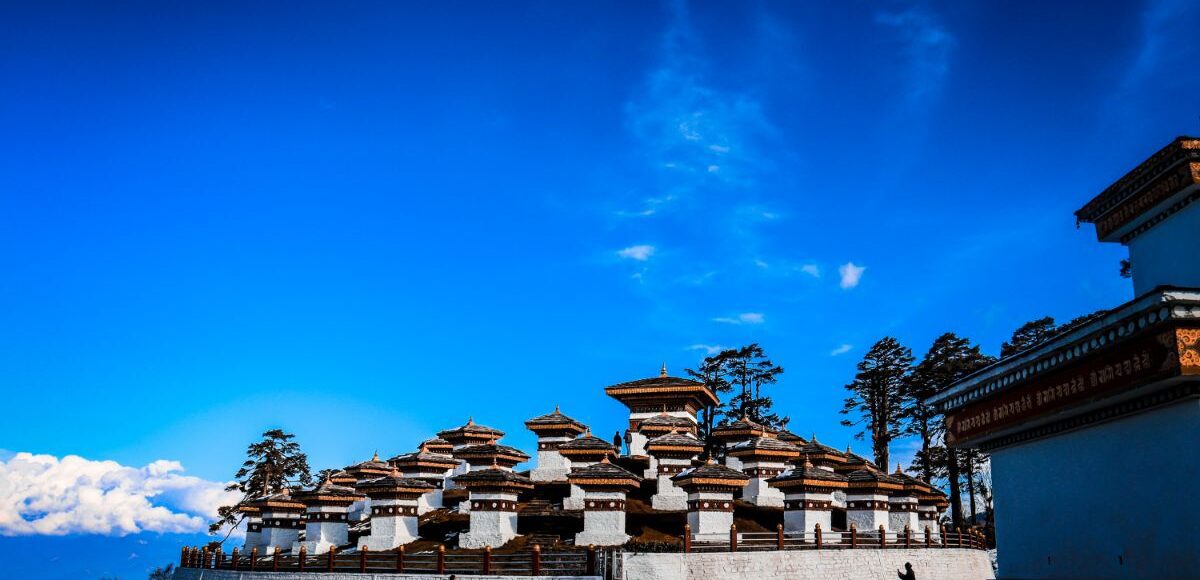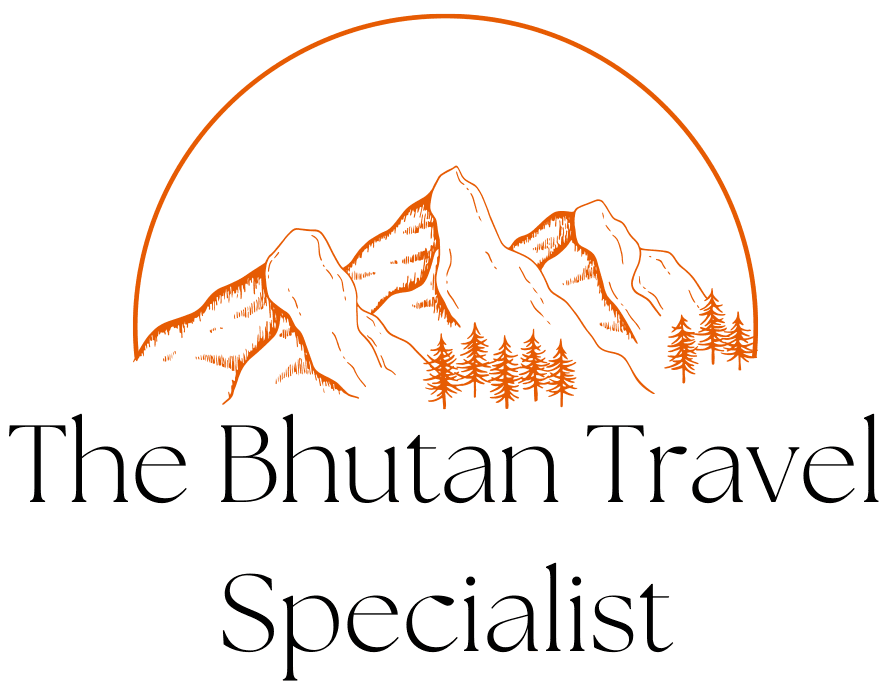Do not hesitate to give us a call. We are an expert team and we are happy to talk to you.
(+975) 17953762

Overview:
Experience the essence of Bhutan in a compact 4-day tour, offering a Glimpse of Bhutan’s majestic landscapes and unique cultural heritage. Begin your journey with a warm welcome in Paro, as you marvel at the awe-inspiring Himalayan scenery during your flight. Explore Thimphu, the modern capital, where tradition and modernity coexist harmoniously. Discover the National Memorial Chorten, Royal Textile Museum, and Trashichho Dzong. Return to Paro to delve into its enchanting valley, visiting the iconic Tiger’s Nest and exploring historic sites like Ta Dzong and Rinpung Dzong. Conclude your Bhutanese adventure with fond memories, leaving the kingdom with a heart full of cherished moments.
Tour Highlights:
1. A scenic flight providing breathtaking views of the Himalayas.
2. Explore the capital city, Thimphu, and its unique blend of tradition and modernity.
3. Visit the National Memorial Chorten, Royal Textile Museum, and Buddha Point.
4. Experience the cultural richness of Trashichho Dzong in the evening light.
5. Discover the wonders of Paro Valley, including the iconic Tiger’s Nest.
6. Immerse yourself in Bhutan’s history at Ta Dzong and Rinpung Dzong.
7. Enjoy a leisurely stroll along Paro Main Street in the evening.
8. Depart with cherished memories of Bhutan’s majestic beauty and warm hospitality.
Paro International Airport (Google Map)
Experience the breathtaking beauty of the Himalayas as you arrive in Paro by Druk Air or Bhutan Airlines. The flight provides a mesmerizing view of the mountains. After airport formalities, embark on a scenic 2-hour drive to Thimphu, the modern capital of Bhutan. Enjoy your evening at leisure. Overnight stay in Thimphu.
Thimphu, the extraordinary capital city, is unlike any other in the world. Explore the seat of government, home to the Royal family, civil servants, and foreign missions. Begin the day with a visit to the National Memorial Chorten, a symbol of peace and prosperity. Experience the fascinating blend of tradition and modernity at the Royal Textile Museum and the enchanting Buddha Point. In the evening, witness the beauty of Trashichho Dzong, a medieval fortress and monastery. Return to Paro for an overnight stay.
Discover the wonders of Paro Valley, a treasure trove of attractions. Start your day with a visit to Tiger’s Nest, a stunning monastery perched on a cliff. Immerse yourself in Bhutan’s rich history at Ta Dzong, now a national museum, and explore the ancient Rinpung Dzong. Take a leisurely stroll along Paro Main Street in the evening. Overnight stay in Paro.
After a delicious breakfast, it’s time to bid farewell to the enchanting kingdom of Bhutan. Drive to the airport for your onward flight, taking with you cherished memories of your Bhutanese adventure.
There are 19 languages spoken in Bhutan, but the national language is Dzongkha. English is used throughout Bhutan’s education system, so it is widely used and understood.
Bhutan is a year-round destination. There are four seasons: summer (June to August), autumn (September to November), winter (December to February) and spring (March to May). But because of the range of altitudes in the country, and the influence of the north Indian monsoons, the climate is incredibly varied.
In the south, the humid, subtropical climate is fairly consistent year-round, with temperatures between 15oC and 30oC. Central Bhutan, with its temperate forests, has a more seasonal climate, with warm summers and cool, dry winters. The northern regions are much colder during winter. Because of the high altitude, mountain peaks are snowy year-round and the lower reaches remain cool in summer.
In summer, the Indian monsoon season runs from late June or July to late September, mostly affecting the southern regions. Most farming activities take place in the summer, when crops thrive in verdant landscapes.
Autumn, from late September or early October to late November, follows the rainy season. It is characterised by bright, sunny days and some early snowfall at higher elevations. It’s the season of feasts and festivals as farmers reap the fruits of their work.
From late November until March, the crisp, clear and sunny winter sets in, with frost throughout much of the country and snowfall common above elevations of 3,000 metres. The winter northeast monsoon brings gale-force winds at the highest altitudes through high mountain passes, giving Bhutan the name Drukyul, which means Land of the Thunder Dragon in Dzongkha (Bhutan’s national language).
Bhutan’s generally dry spring starts in early March and lasts until mid-April. It is a botanist’s delight, with nature in full bloom. Summer weather commences in mid-April with occasional showers and continues to late June.
Bhutan’s currency is called ngultrum. It’s 1:1 with Indian rupees.
Three different electrical plugs are used throughout Bhutan: the British plug (three square pins, compatible with type G sockets), the European plug (two round pins, compatible with type C socket) and the Indian plug (three thick round pins, compatible with type D sockets). It’s a good idea to bring adaptors for all three.
For telephone calls, Bhutan’s country code is +975. Make sure you add this to the beginning of any number if calling Bhutan from abroad.
You can apply online for a visa by completing this application form, or if you’re travelling with a tour operator, they may apply on your behalf. Read more about the visa here.
Visitors from Bangladesh and the Maldives requiring a visa can apply either online before travelling or in person upon arrival in Bhutan.
There is a one-off fee of US$40 for the processing of your application. This is payable at the same time as your Sustainable Development Fee (SDF), as part of the process of submitting your visa application.
The SDF is USD 100 per night for adults from all countries except for India. Children aged between 6 years and who have not yet turned 12 are eligible to pay USD 50 per night. Children who have not yet turned 6 years old do not have to pay any SDF.
The SDF for Indian nationals (showing a valid Indian passport or Voter ID card) is Nu. 1,200 (or the equivalent amount in Indian rupees) per person, per night. Children aged between 6 years and who have not yet turned 12 are eligible to pay Nu./INR 600 per night. Children who have not yet turned 6 years old do not have to pay any SDF.
Tourists visiting Samtse, Phuentsholing, Gelephu, and Samdrupjongkhar towns for 24 hours need not pay Sustainable Development Fee (SDF) beginning April 14, 2023. The waiver will be enforced for a year. The SDF waiver will only apply for tourists who do not travel beyond the designated zones of border towns. However, SDF will apply for visitors who travel beyond the designated zone of border towns.
Tourists will be charged SDF if they go beyond Gurung Basti in Samtse, and beyond Rinchending Checkpost in Phuentsholing. The designated zone in Gelephu is at Aipoli Bridge and Pinchinna checkpost in Samdrupjongkhar.
